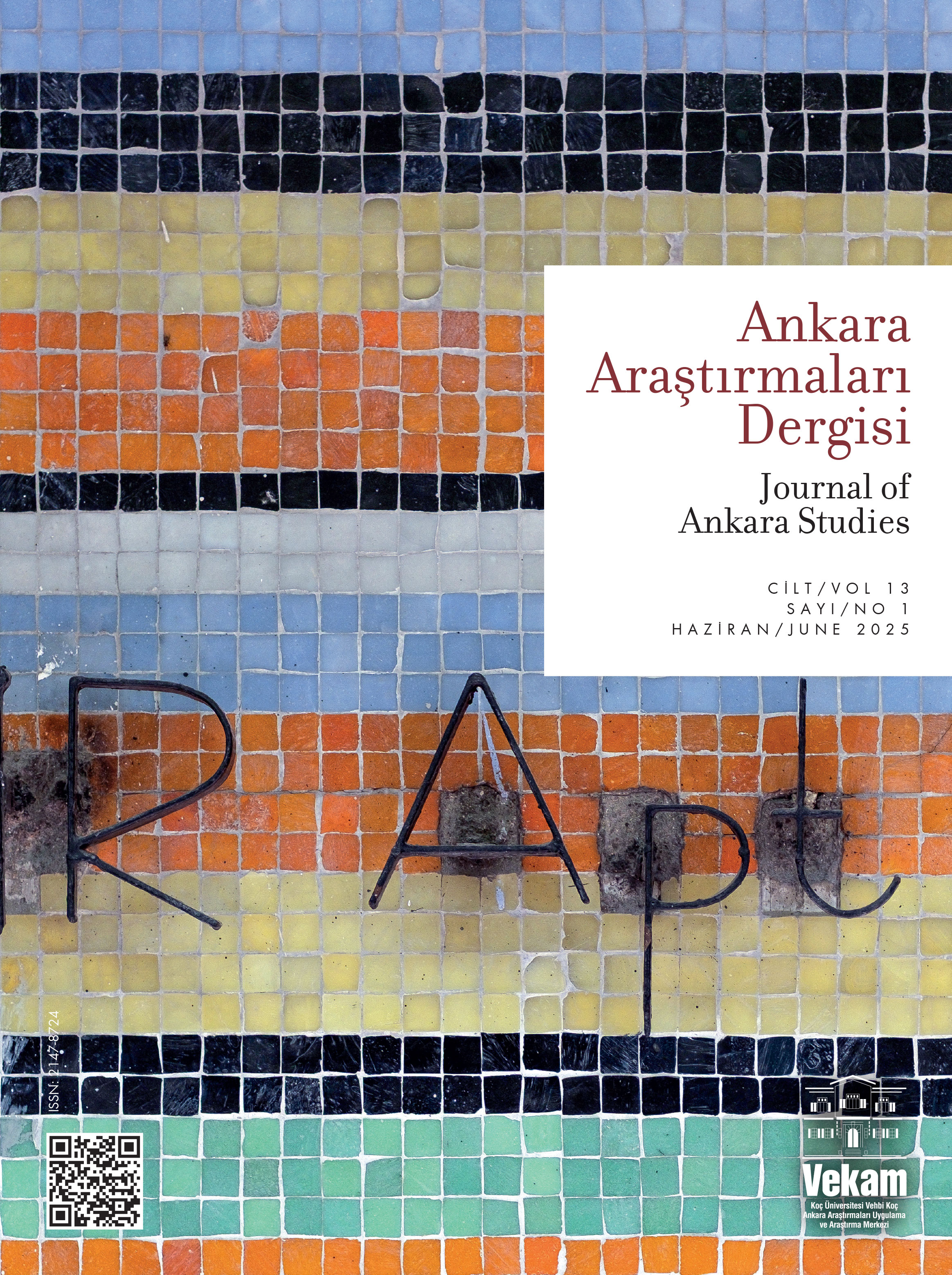Sümerbank’tan Gima’ya: Ankara’da Mağazacılığın Mekânsal Dönüşümü
Umut ŞumnuBaşkent Üniversitesi, Güzel Sanatlar Fakültesi, İçmimarlık ve Çevre Tasarımı Bölümü, Ankara, TürkiyeÇalışma, özellikle Sümerbank ve Gima örneklerine yoğunlaşarak, Erken Cumhuriyet döneminden 1980’li yıllara kadar Ankara’da modern mağazacılığın değişimine ve bu sürecin mekânsal yansımalarına bakmaktadır. Süreç içerisinde üretilen mağazalar sadece Türkiye’de ekonomik ve sosyal tarih bağlamında, tüketim alışkanlıklarının nasıl değiştiğinin belgelenmesi anlamında değil, mimarlık ve tasarım tarihi bağlamında da, değişen siyasal, sosyal ve ekonomik koşulların ortaya koyduğu mağaza tasarımlarının ve bu mağazalardaki yaşam biçimlerinin karşılaştırılması adına da önem taşımaktadır. Sürecin uzunluğu, süreç içerisindeki mağazalar, bu mağazaların sunduğu ürünler, bu ürünlerin tanıtımı için oluşturan görsel/işitsel/metinsel malzeme, mağazaları tasarlayan mimarlar/iç mimarlar, mağazaların mimari nitelikleri ve bu mağazaların sunduğu mekânsal yaşam biçimleri düşünüldüğünde, Ankara’da modern mağazacılık alanında yapılan çalışmaların yeterli olmadığı fark edilmektedir.
Bu kapsamda çalışma, Erken Cumhuriyet döneminden 1980’li yıllara kadar değişen siyasal, sosyal ve ekonomik koşulların ne tür tüketim alışkanlıkları sunduğu ve Ankara’da mekânsal anlamda ne tür mağazalar ürettiğine bakmaktadır. Mağazaların mimari projelerinin elde edilmesinin yanında, bu mağazaları tasarlayan kişilerle sözlü tarih görüşmesi yapılması, bu kişilerin kişisel arşivlerinde yer alan belgelere ulaşılması bu mağazalara ilişkin daha derinlemesine mekânsal bir analizi olanaklı kılmaktadır. Mağazaların mimari özellikleri kadar çalışmanın diğer bir amacı da süreç içerisinde bu mağazalar tarafından üretilen ya da bu mağazaların konu edildiği görse/işitsel/metinsel malzemeye ulaşmaktır. Sözü edilen zaman diliminde mağazalar zengin görsel/ işitsel/metinsel malzemeler (gazete ilanı, broşür, poster, duyuru, ürün katalogu, indirim ve taksit kartlar, vb.) oluşturmuştur. Benzer şekilde bu mağazalar pek çok filme ve edebiyat metnine de konu olmuştur. Sinema filmleri mağazaların yapıldığı dönemki iç mekânlarını hatırlamada, edebiyat metinleri de mağazaların sosyal ve kültürel yaşantıyla kurdukları ilişkiyi kavramada önemli belgelerdir. Tüm bu malzemenin bir araya getirilmesiyle çalışma, mağazaların mekânsal dönüşümüne ilişkin bütüncül bir yaklaşım oluşturmayı amaçlar.
Anahtar Kelimeler: Modernleşme, Mağazacılık, Türkiye, Sümerbank, Gima, Ankara
From Sümerbank to Gima: The Spatial Transformation of Merchandising in Ankara
Umut ŞumnuBaşkent University, Faculty of Fine Arts, Design and Architecture Department of Interior Architecture and Environmental Design, Ankara, TurkeyThis study concentrates on Sümerbank and Gima stores to examine changes in modern retailing in Ankara between the early Republican period and the 1980s. The aim is to document some spatial reflections on this process. The value of such a study is not only as a record of economic and social history, but also in the documentation of changing consumption habits over time. Furthermore, it is also significant, in terms of architectural and design history, to document how changes in political, social, and economical environment created different types of space, and how these spaces were experienced differently by their inhabitants. Considering the number of factors involved: the number of stores which appeared during the period, the variety of products offered by these stores, the audiovisual and textual materials created for the promotion of these products, the architects/interior architects who designed the stores, the architectural qualities of the stores and the spatial lifestyles they provided, one can say that the historiographical studies that focus on modern merchandising and retail design in Ankara over such an extended period are extremely limited.
In order to achieve the above aims, the study initially attempts to appreciate how the changing political, social, and economic environment created different consumption habits, as well as how this environment was envisioned in an architectural form. In addition to analyzing the spatial features of these stores through architectural drawings, the oral histories created by the designer of these spaces, and the access to the documents in their personal achieves, have allowed a more in-depth spatial analysis. In addition to an examination of the architectural features of the stores, another aim of the study is to utilize the audio-visual and textual material connected with these stores. During the aforementioned time period, the stores have built up a rich collection of audio-visual and textual materials (such as newspaper advertisements, brochures, posters, announcements, product catalogs, discounts, and installment cards). Similarly, stores have been the subject of many films and literary texts. Cinema films are particularly important resources in providing a record of the interior spaces of the stores when they were built, while literary texts are particularly useful in understanding the relationship that stores establish with social and cultural life. By bringing all these materials together, the text aims to bridge the gap between space and its related experiences, and thus create a more integrated approach to the spatial transformation of these stores.
Keywords: Modernization, Merchandising, Turkey, Sümerbank, Gima, Ankara
Makale Dili: Türkçe













